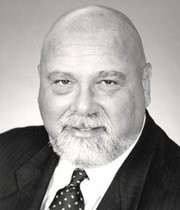Lessons to Be Learned to Source Wisely
Although the North American Free Trade Agreement, between the United States, Mexico and Canada, is the granddaddy of most of our free-trade agreements (FTAs), the textile portion of these treaties are different. Therefore, you must study the differences, especially when it comes to NAFTA versus the Dominican Republic–Central American Free Trade Agreement, which encompasses the United States, Guatemala, Nicaragua, El Salvador, Honduras and the Dominican Republic. (Costa Rica still hasn’t joined yet.)
At this point, Nicaragua is still considered an “underdeveloped” country. That means third-party-country raw materials from outside the region can be cut and assembled with the finished product entering the United States duty-free. There are restrictions as to quantities and the use of thread. So I advise you to use a U.S. customs broker who is qualified in textile and apparel regulations to sort things out.
Sleepwear and brassieres in all DR-CAFTA-qualified countries can also use third-party-country raw materials to be cut and assembled. The finished product also enters the United States duty-free. Please check the exact HTSUS, or Harmonized Tariff Schedule, of the United States number where this is applicable.
Costa Rica is still in the final approval stages of the DR-CAFTA treaty. Therefore, check to make sure you are qualified to import textiles and apparel duty-free.
Logistics regarding freight into the United States may use U.S. ports that you are not familiar with, so make sure your freight forwarder and U.S. customs broker understand the total program. Time of actual freight delivery (shipping, clearances and costs) may differ greatly.
Due diligence, infrastructure and a complete understanding of NAFTA and DR-CAFTA regulations are necessities.
Research the alternatives
With various free-trade agreements in place now, there are plenty of options to manufacturing in China, especially with the protectionist attitudes toward that country.
With all of the variables involved in producing in China, such as safeguards, anti-dumping measures, quotas, protectionist legislative bills, export restrictive tariffs on U.S. products, currency valuations, bilateral trade restrictions, political unrest in many nations and consolidation of large retailers, the wisest business move is to make sure you have alternative sources for your products.
Look at Sri Lanka, Mexico, Central America and the Dominican Republic, Chile, Peru, India, Thailand, Bangladesh, the African countries that make up the African Growth Opportunity Act, Turkey, and the Jordan free-trade zone, as well as others.
Do your homework and determine how you can remain competitively priced and still produce quality goods and have on-time delivery.
Step 1: You should find out which countries have the raw materials (or can easily obtain the necessary materials) to build your product.
Step 2: You must find out if the FTAs are applicable and/or which restrictions might be major problems.
Step 3: You must understand and have all of the applicable FTA rules and regulations. Do not assume that one agreement for one region is applicable to another.
Step 4: You must profile the factories and the agents with the due diligence of a criminal investigator. This is not done over the lavish dinners you will be invited to; these dinners are how they check you out. On-site complete profiling is required, as well as checking references.
Step 5: Your professional instincts after you gather the facts will most likely be the main factor for the “yes or no” decision.
Step 6: Do not try to make a “silk purse out of a sow’s ear” hellip; enough said.
Step 7: Make sure your infrastructure person is professional and understands not only the manufacturing, quality-control, work-in-process, logistical and documentation processes but also the cultural differences and cultural communications required when dealing in different countries.
We joke about the language of the “garmento,” and this is somewhat a truism. But good communication is an art and must be translated into mutual understanding. Remember the old game of “telephone” and how the message changed totally by the time it reached the last person.
It is not an easy process, and we all want to continue with the vendors we have trained to deliver our product. However, there is nothing so permanent as change, and with the World Trade Organization in a non-cooperative working mode, even having trouble holding a meeting lately, we must source continually and teach and train constantly. Like the soap opera “As the World Turns,” sourcing continues to change daily.
In addition to merchandising, design, sales and marketing, you must put the time, effort and monies into the “back end” of production and finance in order to satisfy the needs of your customers.
You must do your summer homework now and make plans that are flexible so you can change according to the many variables.
I am getting stories and calls daily: “My broker tells me I have to pay duty on supposedly non-dutiable items.” “I need a visa.” “My accountant tells me I am entitled to a drawback, but he does not know how to obtain it.” The lowest price from your professionals is not always the best value. Understanding the risk factors and having the knowledge to evaluate potential problems are the qualities you need in these changing times.
Bruce S. Berton is an officer and director of international business consulting with Stonefield Josephson Inc., a leading regional consulting and accounting firm with California offices in Los Angeles, Irvine, San Francisco and Walnut Creek. Reader inquiries are welcome and may be sent to Bruce Berton at Stonefield Josephson Inc., 2049 Century Park East, Suite 400, Los Angeles, CA 90067 or (310) 432-7437. Or send an e-mail to bberton@sjaccounting.com.























